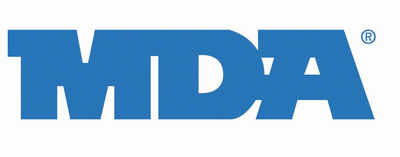Anzio, 22 Jan to 5 June 1944
Posted: Thursday, January 28, 2010 by Travis Cody inI've written quite a few commemorative essays about events of World War II, mostly having to do with major battles that have gotten plenty of press over the years...Pearl Harbor, Midway, D-Day, Bastogne to name just a few.
World War II was truly a global war, and this year I want to try and explore other theaters of operation. Today I want to look at the Battle of Anzio. After successful campaigns in North Africa and Sicily, the British Eighth Army launched an invasion of Italy. But the invasion stalled at the German Gustav Line at Cassino, south of Rome. And at this point, it seems that differences in overall objective played a decisive role in deciding what to do next, and how to do it.
After successful campaigns in North Africa and Sicily, the British Eighth Army launched an invasion of Italy. But the invasion stalled at the German Gustav Line at Cassino, south of Rome. And at this point, it seems that differences in overall objective played a decisive role in deciding what to do next, and how to do it.
The American command seems to have been focused on planning and assigning resources to Operation Overlord, the invasion of Europe which ultimately began on 6 June 1944. However the British high command seems to have been determined to liberate Mediterranean nations.
At the dogged insistence of British Prime Minister Winston Churchill, Operation Shingle was launched on 22 January 1944. This was an amphibious invasion around Anzio and Nettuna in Italy. The objective was to outflank the German defenses to open the way for the liberation of Rome.
Elements involved in the invasion included the British 1st Infantry Division, British 46th Royal Tank Regiment, British 2nd Special Service Brigade, US 6615th Ranger Force, US 3rd Infantry Division, US 504th Parachute Infantry Regiment. At least 36,000 Allied soldiers from the US, UK, and Canada participated in the initial landings. By the end of May, more than 150k soldiers were in combat against more than 135k Germans. The initial landings are generally considered successful. The Allies secured the beaches to land soldiers, tanks, and artillery, and kept the way open to add manpower and firepower. But rather than press the attack and move hard inland, Maj Gen John Lucas chose instead to reinforce his beachhead. This decision is often blamed for the resulting high casualties and prolonged battle across rough Italian terrain against heavily fortified German defensive positions.
The initial landings are generally considered successful. The Allies secured the beaches to land soldiers, tanks, and artillery, and kept the way open to add manpower and firepower. But rather than press the attack and move hard inland, Maj Gen John Lucas chose instead to reinforce his beachhead. This decision is often blamed for the resulting high casualties and prolonged battle across rough Italian terrain against heavily fortified German defensive positions.
General Lucas maintained that he did not have a superior numerical position nor a superior tactical one to drive inland. Despite that assertion, Allied high command was dissatisfied with the lack of results and replaced General Lucas with General Lucian Truscott.
I haven't thoroughly studied this particular battle, but my initial readings lead me to believe that there is considerable data to support the cautious decisions made by General Lucas. Fortune often favors the aggressor, but in this case it doesn't appear that General Lucas had enough manpower or the appropriate mix of firepower to press the attack. His caution may have been the key to holding the defensive position from which a more fortified attack across Italy could be launched.
I guess it depends on your point of view. One could suggest that decisions made late in the fighting by General Mark Clark were of more negative consequence. His changes to the battle plan during the spring 1944 offensive may have led directly to the failure of the Allies to defeat the German 10th Army, resulting in a year of fighting in Italy. I can say with certainty that it is much easier to analyze the results of difficult choices 66 years later.
Ultimately, Allied forces successfully landed at Anzio at the end of January 1944 and moved inland cautiously after establishing a secure beachhead. German counter offensives in February and March forced the Allies to concentrate on holding the foothold in Italy. Finally, the allies broke out of the beaches in May 1944 in force against determined enemy resistance. And as a benefit, the fighting in Italy held five German divisions in the country instead of allowing them to be transferred to Europe to help repel the Allied invasion.
Despite heavy casualties, difficulties with basic resupply, and fierce fighting along the front lines, Allied forces finally broke the German resistance, forced a full retreat, and entered Rome on 4 June. US and British forces continued to fight in Italy through May 1945.
The Battle of Anzio is considered successful, but it by no means progressed according to plan. It was also costly, with 43k Allied casualties including 7k killed and 36k wounded or MIA. German forces suffered 40k casualties, with 5k killed and over 30k wounded or MIA, as well as 4500 taken prisoner.
I intend to add a few books to my library about the fighting in Italy. The internet sources I read were fine for a general understanding. But I prefer to read a little deeper. Soldiers, Sailors, Airmen, and Marines were awarded 66 Medals of Honor for actions in Italy. I shall honor their memory, as well as all those who fought, in the best way I know...by learning of their experiences and sacrifices.
















